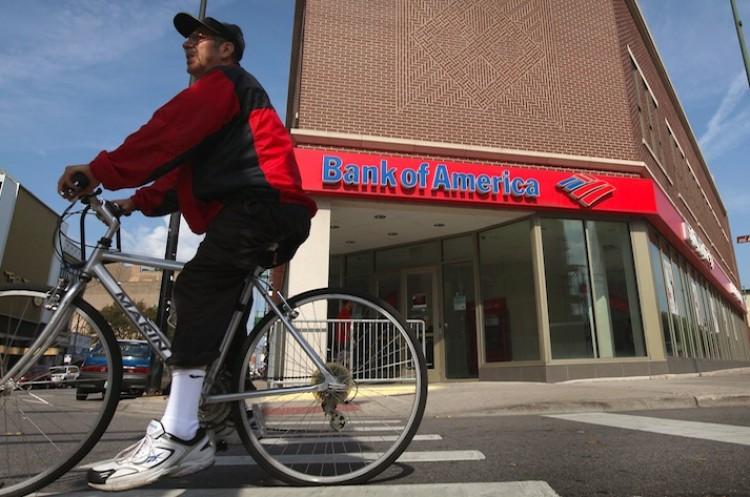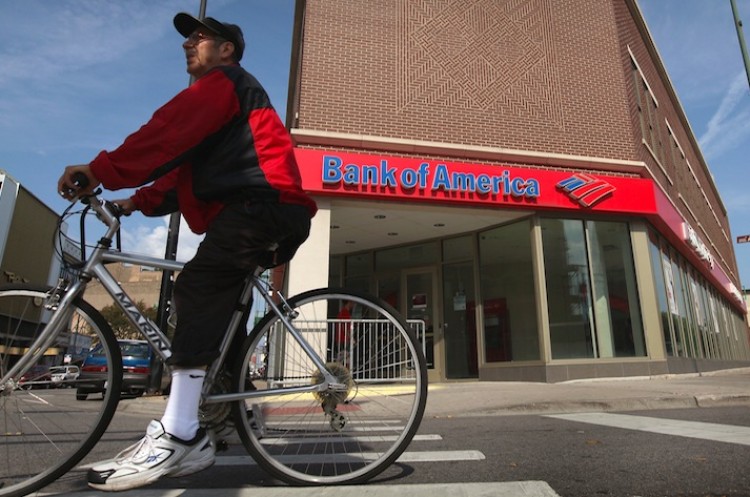Ratings agency Moody’s Investors Service downgraded Bank of America Corp. (BAC), chopping the rating for long-term debt from A2 to Baa1, with a negative outlook, leaving the short-term rating untouched for the time being.
Moody’s suspects that the U.S. government will no longer be that eager to bail out problem banks, as the financial crisis is not as acute, and the problem of other banks following suit and failing is no longer at issue.
“The downgrades result from a decrease in the probability that the US government would support the bank,” said Moody’s in a Sept. 21 release.
Troubling Issues
For BAC and its subsidiaries, but especially its subsidiary Countrywide Financial Corp., troubles for deceptive residential loan modification and foreclosure practices continue to linger in court. Nevada’s and Arizona’s Attorney Generals’ offices filed lawsuits during December of 2010 in Clark County District Court and Maricopa County Superior Court respectively.
“Bank of America has been the slowest of all the servicers to ramp up loss mitigation efforts in response to the housing crisis. It has shown callous disregard for the devastating effects its servicing practices have had on individual borrowers and on the economy as a whole,” accused Terry Goddard, Arizona attorney general, in a December 2010 press release.
In August, the Nevada attorney general’s office filed an amendment to its earlier filings, asking that a consent judgment entered on March 13, 2009, be terminated. The amended complaint alleged that Countrywide Financial Corp. materially violated the consent judgment and deceived its customers.
A consent judgment, which is issued by a judge, is an enforceable agreement between the parties to the lawsuit to resolve the matter without costly litigation.
The court filing alleges seven different types of misrepresentation, such as increasing interest rates on monthly payments, neglecting to provide relevant documentation, refusing to provide loan modifications, and not allowing its consumers sufficient time for completing relevant documentation.
The “complaint alleges that Bank of America’s misconduct cuts across virtually every aspect of its operations—from originating to servicing and, all too often, to foreclosing on the loans and homes of Nevada consumers,” according to an Aug. 30 press release by the Nevada State Attorney General’s office.
Spelling More Trouble
On Sept. 2, BAC and Countrywide Financial Corp. were charged along with a total of 17 financial institutions by the Federal Housing Finance Agency (FHFA), the conservator of Fannie Mae (the Federal National Mortgage Association) and Freddie Mac (the Federal Home Loan Mortgage Corp.), for violating federal security laws in respect to private-label mortgage-backed securities (PLS).
“Defendants falsely represented that the underlying mortgage loans complied with certain underwriting guidelines and standards, including representations that significantly overstated the ability of the borrowers to repay their mortgage loans. These representations were material to the GSEs [Government-Sponsored Enterprises], as reasonable investors,” according to the FHFA filing.
The FHFA states in a published statement that financial institutions were responsible for Fannie Mae and Freddie Mac’s losses because of misrepresentation in the description of the hundreds of billions worth of PLS packages sold to the two housing finance giants.
“To be clear, Fannie Mae and Freddie Mac were investors in these PLS, not the originators of those securities,” according to the FHFA statement.
Legal experts suggest that the FHFA lawsuit is without merit, given that Fannie Mae and Freddie Mac were no greenhorns or newcomers to the mortgage investment market.
The FHFA responded to this suggestion in its statement: “Under the securities laws at issue here, it does not matter how ‘big’ or ‘sophisticated’ a security purchaser is, the seller has a legal responsibility to accurately represent the characteristics of the loans backing the securities being sold.”
Media reports put a price tag on the FHFA court filing, suggesting that the FHFA is angling for $196 billion, with BAC’s portion amounting to $6 billion and Countrywide’s to $26.6 billion.
The above potential recoveries are hogwash, responded the FHFA in its statement. To put a price tag on the outcome is impossible, as it all depends on the responses from the defendants, the evidence brought before the court, and the judicial findings.
Next...No Breather for BAC and Its Subsidiaries
No Breather for BAC and Its Subsidiaries
An Internet search concerning litigation against BAC is quite productive, revealing many lawsuits. Some have been settled in favor of BAC, and some are ongoing litigations concerning BAC’s handling of residential mortgage-backed securities (RMBS).
At the beginning of September, American International Group Inc. (AIG) joined a group of defendants to stop an $8.5 billion settlement between Bank of New York Mellon Corp. and BAC and its affiliates. At issue are 530 RMBS of which AIG holds 97 RMBS.
Besides AIG, Goldman Sachs & Co., public pension owners, the FHFA, Freddie Mac, Fannie Mae, a number of insurance companies, and the National Credit Union Administration are party to the lawsuit.
Advisory Perspectives Inc., a financial professional service, states in their Memo that “the proposed [$8.5 billion] settlement has fallen apart pretty completely, with the States of New York and Delaware, as well as the FDIC and various other federal agencies, objecting to the arrangement and filing counter-claims against BAC and Bank of New York.”
A number of lawsuits have been filed to stop the $8.5 billion settlement. The New York Attorney General’s (NY AG) office requested that a state judge intervene in the $8.5 billion settlement, given that Bank of New York Mellon, as trustee of a group of investors, deceived its clients into believing that the RMBS were sound and all documentation was in perfect order.
NY AG Eric T. Schneiderman alleges that the proposed settlement lacks fairness for all investors, and “the Trustee’s duty to negotiate the settlement in the best interests of investors in the trusts has been impaired because the Trustee stands to receive direct financial benefits under the Proposed Settlement,” according to court filings posted on the Lowenstein Sandler law firm’s website.
The NY AG lawsuit opens the doors widely for individual investors and not for just a few select investors to collect on losses due to the RMBS. The attorney general accuses BAC, as trustee of the RMBS, and its subsidiaries, including associated lawyers, of neglecting their fiduciary responsibility to the investors and misrepresenting the quality of all RMBS in its documentation.
“The upshot of NY AG Eric Schneiderman’s lawsuit filed in NY Supreme Court is that it creates new, far larger causes of action against BAC, BK and other lenders with RMBS exposures than existed a month ago,” according to the Advisory Perspectives Memo.
Boosting BAC’s Confidence
“BAC is a good company with a bad parent company balance sheet. The operating units of BAC are profitable and well capitalized at present,” according to a Sept. 19 commentary by the Riskcenter, a web-based news center for financial risk professionals.
To ease BAC’s anxieties, Warren Buffet, chairman and CEO of Berkshire Hathaway, invested $5 billion in BAC, according to an Aug. 25 BAC press release.
“Bank of America is a strong, well-led company… I am impressed with the profit-generating abilities of this franchise, and that they are acting aggressively to put their challenges behind them,” said Buffet in the BAC press release.
On June 30, BAC’s consolidated assets were $2.3 trillion, with $222 billion in equity. Despite revenues of $13.5 billion, compared to $29.5 billion as of June 30, 2010, the consolidated net earnings show a loss of $8.8 billion, including goodwill impairment charges, as of June 30; while as of June 30, 2010, the bank showed a profit of $3 billion and no goodwill impairment charges.
In their second quarterly report filed with the Securities and Exchange Commission, BAC states that it expects to have to settle claims concerning RMBS. Between 2004 and 2008, it sold more than $2 trillion in RMBS to government-sponsored enterprises and others. As of June 30, BAC had liabilities of $17.8 billion for unresolved RMBS, for which it provisioned $14 billion.





